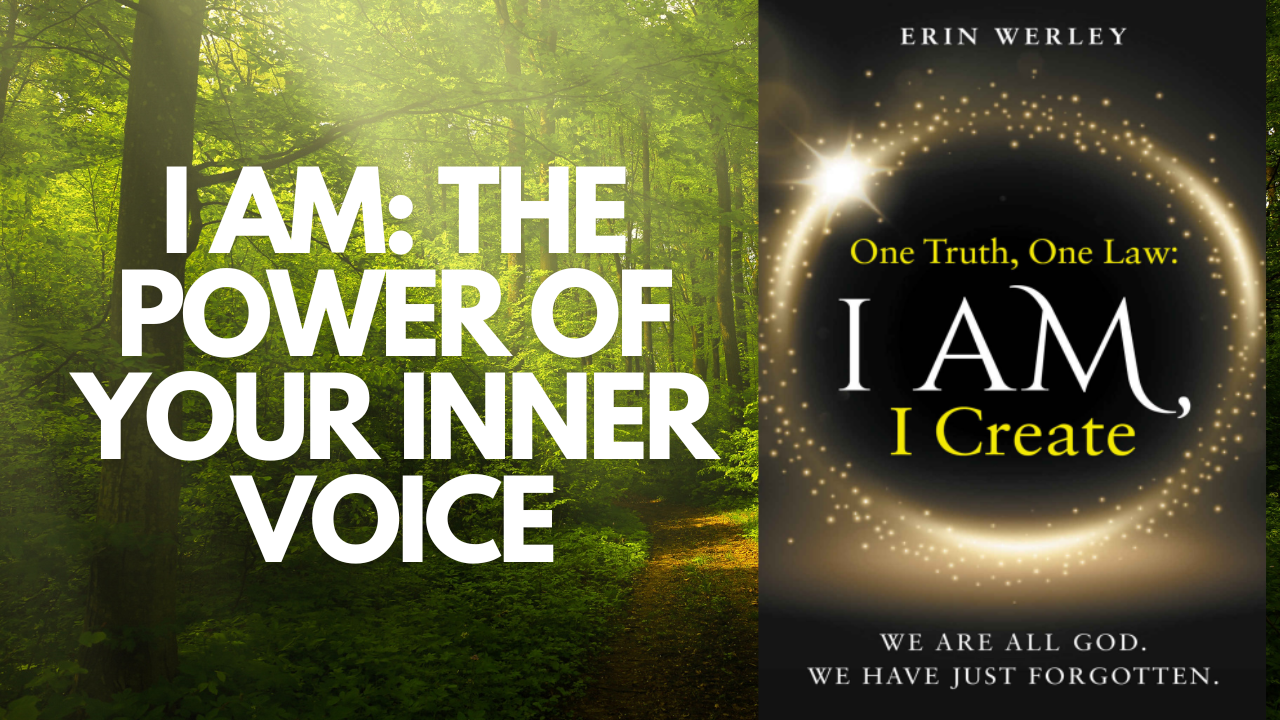
“One Truth, One Law: I Am, I Create” is a book documenting conversations between Erin Werley and her inner voice, which identifies itself as “I Am” and claims to be God. The book presents a philosophy emphasizing the oneness of all beings and the unlimited creative power of each individual’s thoughts. Daily chapters explore concepts like the nature of creation, the role of the persona (the self-image that separates us from our true selves), the power of intention, and overcoming limiting beliefs. The authors encourage readers to connect with their inner voice to find their purpose and create a fulfilling life. Ultimately, the book aims to empower readers to realize their divine nature and utilize their inherent creative abilities.

1. What is the core message of this book?
The core message is that you are God, and your thoughts create your reality. The book emphasizes the concept of “I Am and I create,” stating that every thought has the power to manifest in the physical world. It encourages readers to recognize their unlimited creative potential and to listen to their inner voice, which is also God (I Am) within them. This inner voice guides you towards fulfilling your unique “blueprint,” your life’s purpose, and helps you create a joyful life. The book posits that you’ve been conditioned by society to believe you are an individual, separate from God and others, when in reality, we are all one.
2. How can I connect with my inner voice (God/I Am)?
To connect with your inner voice, you need to quiet your mind and become aware of your thoughts. Find a quiet place, close your eyes, take deep breaths, and ask yourself a question. Listen for the answer, even if it doesn’t come immediately. It might manifest as a feeling, a gut instinct, or a thought that just appears in your head. The key is to believe it is possible and to trust in the guidance you receive. Regular practice of this type of meditation and self-reflection will strengthen your connection to your inner voice. Acknowledging and writing down your creations can also strengthen your understanding of your power and your connection to the voice.
3. What is the “persona” and how does it relate to my true self?
The persona is the part of you that believes you are not God, that you are an individual separate from the oneness. It’s a construct formed by the thoughts and beliefs others have about you, especially during your early childhood. Your persona acts as a veil and obscures the truth of your divine nature. It’s a necessary mechanism that allows you to experience individuality and the physical world, but it also creates limiting beliefs, fears, and doubts that block your access to your true creative power. These doubts and fears are essentially your persona talking, making it essential to separate them from the calm, knowing guidance of your inner voice.
4. How do my thoughts create my reality?
Every thought you have creates, whether you realize it or not. Thoughts originate in the non-physical world of universal mind and are then projected into the physical world. This process is constant, and it is the way the universe manifests. If your thoughts are driven by fear, doubt, and lack, then that’s what you’ll see in your life. If your thoughts are driven by love, knowing, and abundance, then that’s what you will create. When you consciously use your thoughts to create with intent, you manifest what you want. The key is to understand that your power stems from being “I Am.”
5. How can I overcome doubt and fear?
The book emphasizes that action obliterates doubt. By taking action and pursuing a creation you desire, you will see progress and build your knowing that your thoughts create. Each step you take will reinforce the idea that you are able to manifest what you want and that “I Am” is always with you. When doubts arise, address the doubts as if they were from a separate entity, “Phil”, and remind “Phil” that “I Am” is in control. Self-talk and affirmations can also help to re-condition your thinking towards this idea and to move you away from those fears and doubts. By continually listening to and trusting your inner voice, you will gradually dissolve these limiting beliefs.
6. What is the purpose of life?
The purpose of life, according to the book, is creation. You are here to consciously create new thoughts, things, and experiences that expand the universe. You each have a unique blueprint, which is what your inner voice is prompting you to bring into the physical world. The focus of life is not about finding a pre-set destiny, but choosing what you will create from the limitless possibilities. True joy comes from creating from a place of love and knowing, not from replicating old thoughts or simply accepting what’s already there. It is about building your knowing of your connection to “I am,” realizing and living into your divine nature.
7. Why is it important to trust myself and my inner voice?
The book highlights that your inner voice, or “I Am,” is the source of true knowing and guidance. Because each human has a unique blueprint, no one else can tell you what to do or what is right for you. When you listen to other people’s opinions or advice, you may be detouring from your true path and ignoring the guidance you are already receiving internally. You must trust that your inner voice will lead you to create what you are meant to create. This also means trusting the wisdom behind all the emotions you may feel, using them to understand how much you are allowing your inner self. The only way to fulfill your unique blueprint is to follow your intuition.
8. Is suffering real?
Suffering is not real in the sense of a universal truth, but as a human experience. Suffering is a state of mind that can be created or uncreated through thought. You suffer when you believe in the limitations and conditions of the physical world and when you are disconnected from your inner “I Am”. By recognizing that you are a powerful creator with an unlimited capacity for joy, you diminish your suffering. Suffering is simply a manifestation of fear – the fear that is associated with not knowing who you are, and by knowing you are God, you are liberated from the fear and therefore liberated from the suffering.
I Am, I Create: A Study Guide
Quiz
Instructions: Answer the following questions in 2-3 sentences each, based on the source material.
- According to the text, how is the physical world created?
- What is the one truth, one law, according to I Am?
- How does the text define the relationship between humans and God?
- What is a “persona” and how does it develop?
- According to the text, what is the source of worry and negative emotions?
- How does the text describe the connection between thoughts and creation?
- How does the text define “knowing”?
- What is a human’s “blueprint” according to the text?
- How does the text suggest one can begin to communicate with their inner voice?
- What does it mean to “trust yourself” in the context of the text?
Answer Key
- The physical world is created through thoughts from the universal mind in the spiritual world. It is projected from the nonphysical realm into what humans perceive as reality.
- The one truth, one law is “I Am, and I create,” which means that the universal mind, or God, is the source of all creation through thought, and humans are part of this creative power.
- Humans are a direct link to God because they are a concentrated form of the universal mind; each individual is a physical embodiment of God. They also have the ability to create with their thoughts.
- A persona is a construct of beliefs, doubts, and fears that gives the illusion of individuality. It develops through the influence of others’ thoughts, experiences, and societal programming, especially during childhood.
- Worry and negative emotions stem from not knowing that you are God and that your thoughts create. The text attributes these feelings to fear and a lack of understanding of your own creative power.
- Every thought, whether conscious or unconscious, creates reality. The text claims that there are no exceptions to this rule. It also suggests that thoughts coming from a place of love expand the physical world, while those coming from fear shrink it.
- “Knowing” is defined as the absence of doubt. It is a calm, joyful feeling associated with a deep understanding that you are God and have unlimited creative power.
- A human’s “blueprint” is their individual life purpose or contribution to the universe. This is something each person has always wanted to do but might be afraid to.
- The text suggests finding quiet, focusing on breathing, and asking your inner voice questions. The text also stresses the importance of believing that you can hear the answer and that the answers will come when you least expect it.
- In the context of the text, “trust yourself” means to prioritize your inner voice over the advice of others. It means recognizing that you have access to the universal truth within you, and to make decisions based on this inherent knowing.
Essay Questions
Instructions: Consider these essay questions and formulate your response. There are no answers provided below.
- Discuss the concept of “I Am” in relation to the individual and universal consciousness as presented in the text. How does this understanding challenge conventional views of identity and spirituality?
- Analyze the role of the “persona” in limiting one’s creative potential. Explore how the text suggests overcoming these limitations and aligning with one’s true self.
- Examine the idea that “thought is everything” and that “every thought creates.” How does the text use this idea to challenge traditional understandings of reality, and what are the implications for individual responsibility?
- Discuss the concept of “knowing” as it is presented in the text. Compare and contrast it with other forms of knowledge, like intellect or faith. How might “knowing” impact one’s ability to create?
- Based on the source material, how would you define the ideal path for a person seeking enlightenment?
Glossary of Key Terms
I Am: Refers to the universal, all-encompassing consciousness, often synonymous with God. It is presented as the essence of every individual.
Persona: The constructed self or ego, characterized by beliefs, doubts, and fears. It creates the illusion of individuality, thus obscuring one’s true nature as I Am.
Inner Voice: The direct channel of communication with I Am within each individual, often associated with intuition, guidance, and truth.
Knowing: The state of absolute certainty and absence of doubt, achieved by recognizing one’s true identity as I Am. It is a feeling of calm, love, and joy.
Creation: The act of bringing something into existence through thought. This includes both tangible creations in the physical world and intangible experiences.
Blueprint: An individual’s unique purpose or destiny for this lifetime; what they are here to create for the world.
Universal Mind: The spiritual dimension that contains all thoughts and creative potential. The physical world is presented as a projection of this non-physical world.
One Truth, One Law: “I Am and I create.” This central idea suggests that all of existence is a product of thought originating from the universal mind.
Limitation: Human-made ideas, rules, and beliefs that restrict one’s perception of reality and creative ability. Examples are scientific laws or the perception of time.
Doubt: A belief that limits or prevents manifestation, and is attributed to the persona. It is considered the opposite of “knowing” and a source of fear.




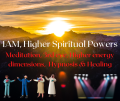

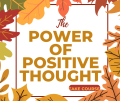

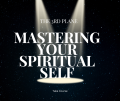

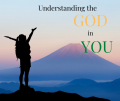
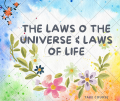










0 responses on "I Am: The Power of Your Inner Voice"